August 27, 2019 – The flight itself is rough. We take off at around 15:20. Pretty soon afterwards dinner arrives, so we can get a “long” rest. Sleeping is difficult. There are people keeping their window shaders open, so daylight sneaks in. Every time I doze off for a bit, there is something in my surroundings that prevents me from sleeping. My earplugs do not work that well, and I even manage to lose one in the plane.
We finally arrive at Kansai International Airport. I line up in the queue to leave the plane. I get my first impressions of Japanese texts on signs, and to my relief there is also sings in English! We go to the main building in a train-like vehicle. After arriving there we must stand in line again for passport checks, fingerprint scans, a face scan, a temperature check and to pass immigrations. Consequently, I pick up my luggage, and having nothing to declare, exit via taxes.
Leaving Kansai airport in a hurry
I had prepared and downloaded a map of the airport, so I could see where to pick up my Japanese Sim-card. During my pilgrimage I am using a Japanese telephone number with internet access in my own phone. Of course, I did not manage to find the store in just one go. But finally, I found it and they helped me to install the Sim-card. Now I had to withdraw some cash and get going to see if I could catch the “early” bus. If I did not, I would have had to wait for two hours. Finding the ATM in the grand hallway is difficult, but with some assistance of the helpful Japanese people present, I manage. I am using a Japanese ATM-machine for the first time, luckily there is the option to access the menus in English!
Taking the bus to Tukoshima
Then I still must find the place where they sell tickets for the bus to Tukoshima. That is a puzzling task. First, I am checking outside, where the bus-stop is located, but I find no ticket-booth. Then I am getting sent back inside (in Japanese) by one of the people waiting in line for the bus to arrive. Finally, I find a service desk where I can pay for the bus ride with my credit card. The first ¥ 4.200 have been paid!
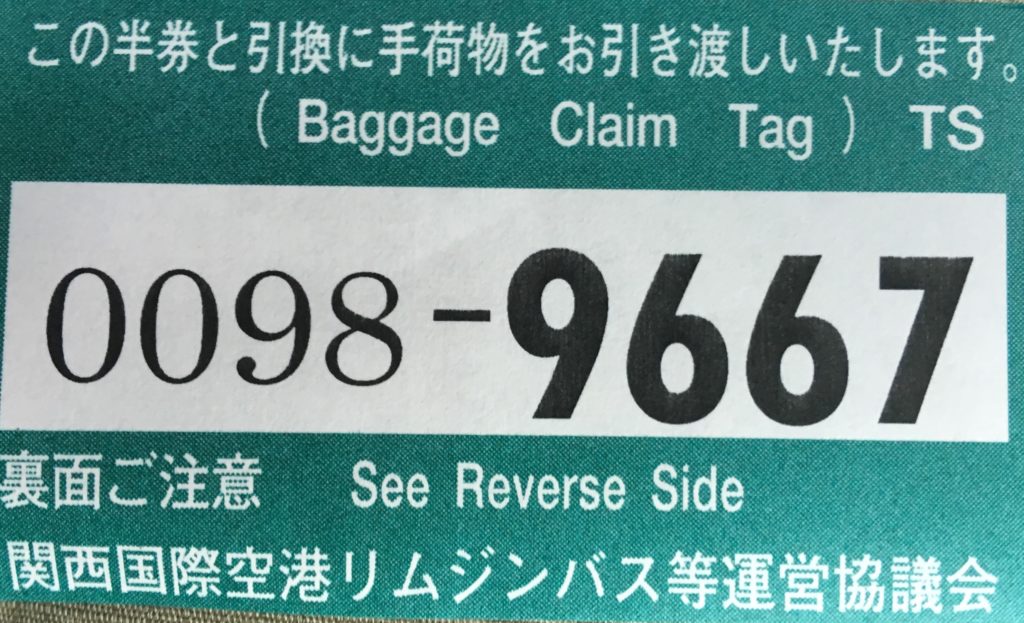
At the bus station there is a gentleman busying himself with collecting all the baggage of the passengers that are waiting in a neat line for the bus to arrive. My backpack gets a label, I get a ticket. Then the bus arrives. The man puts all the luggage gently in the hold. The bus driver is wearing a facemask, a uniform, and an impressive hat with cap. He takes my bus ticket and lets me enter the bus. I look for a quiet spot, but there are only about twelve passengers, so that is not too difficult. In the bus I reboot my iPhone. My internet works now, and I can call with and be called by Japanese phone numbers!
Travelling to the island
Kansai International Airport is situated on an island. So, when the trip begins, we head to the mainland, over an enormous bridge. And then we get round to Osaka, of which only industrial zones are visible. They like narrow, high bridges here. Highways are built on top of each other. Dark, ominous clouds can be seen above us. In the meantime, it has started raining, and I am glad I remain nice and dry in the bus. I take off my shoes and stay neatly seated in my chair with my feet donning socks. The bus stops in the middle of the highway sometimes, sometimes in the middle of nowhere, and at toll gates. Passengers mostly get out. A lone straggler enters.
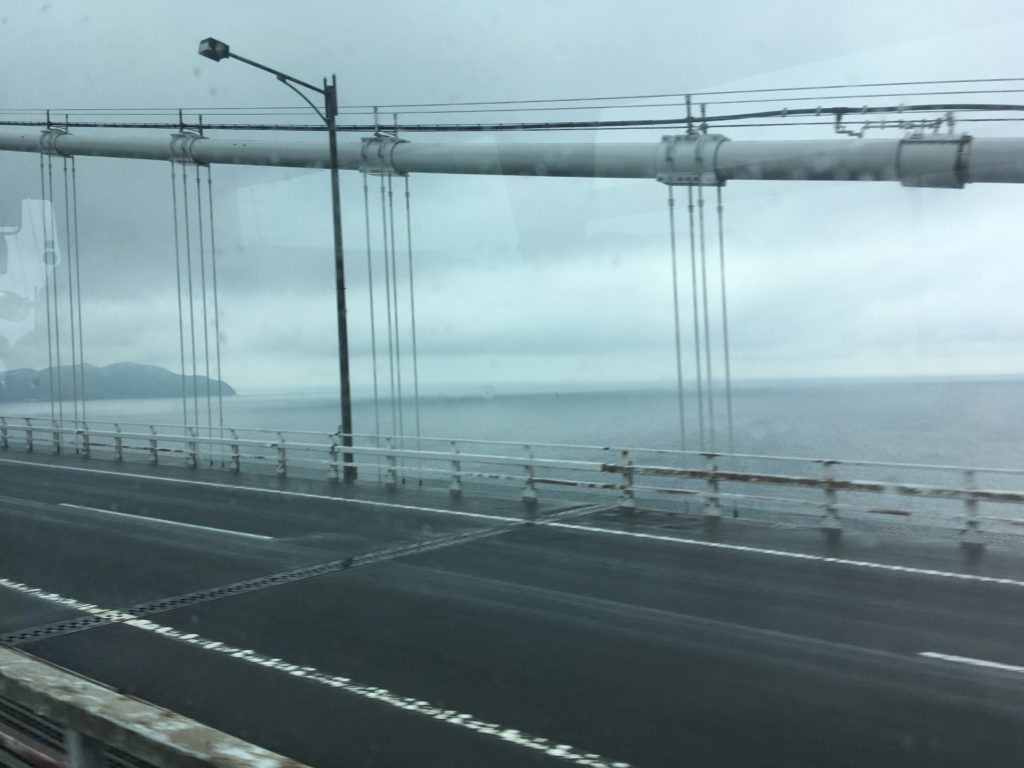
De bridges to Shikoku are impressive and seemingly without end. Two long crossings and a tiny island in the middle. People even exit on the small island! Then we arrive at “The” island! We get close to where I will be beginning my route, but the bus takes a different route, and we go to Tukoshima and its Central Station. I get off there, hand over my luggage ticket and retrieve my backpack. It is still packed in the rain cover I used to protect it during the flight.
My first Japanese train ride
With the bag in my hand, I walk into the train station. How will I get a ticket here and do I know what train I need to take? That turns out to be a challenge because no one speaks English. By non-verbal communication I manage to make it clear that I want to go to Bandoo Eki, the train station of Bandoo close to temple one. First, I need to go get a ticket; that is only sold at a machine. A ¥ 10.000 bill goes in, and it feels like I have won at slots. The ticket is only ¥ 260, so change falls down like a waterfall of coins and I get some banknotes.
Ticket in hand and I go towards the platform. Apparently, a train just left. The next train departs from a different platform. I walk there with hope in my heart. When I try to enter, it turns out I am at the front of the train. You are only allowed to exit the train from the front. So, I walk to the back. To be sure, I ask some schoolgirls in uniform if this train stops in Badoo Eki. Somewhere between English and Japanese we manage to understand each other. After a short search on their mobile phones, I get confirmation. They did not know either!
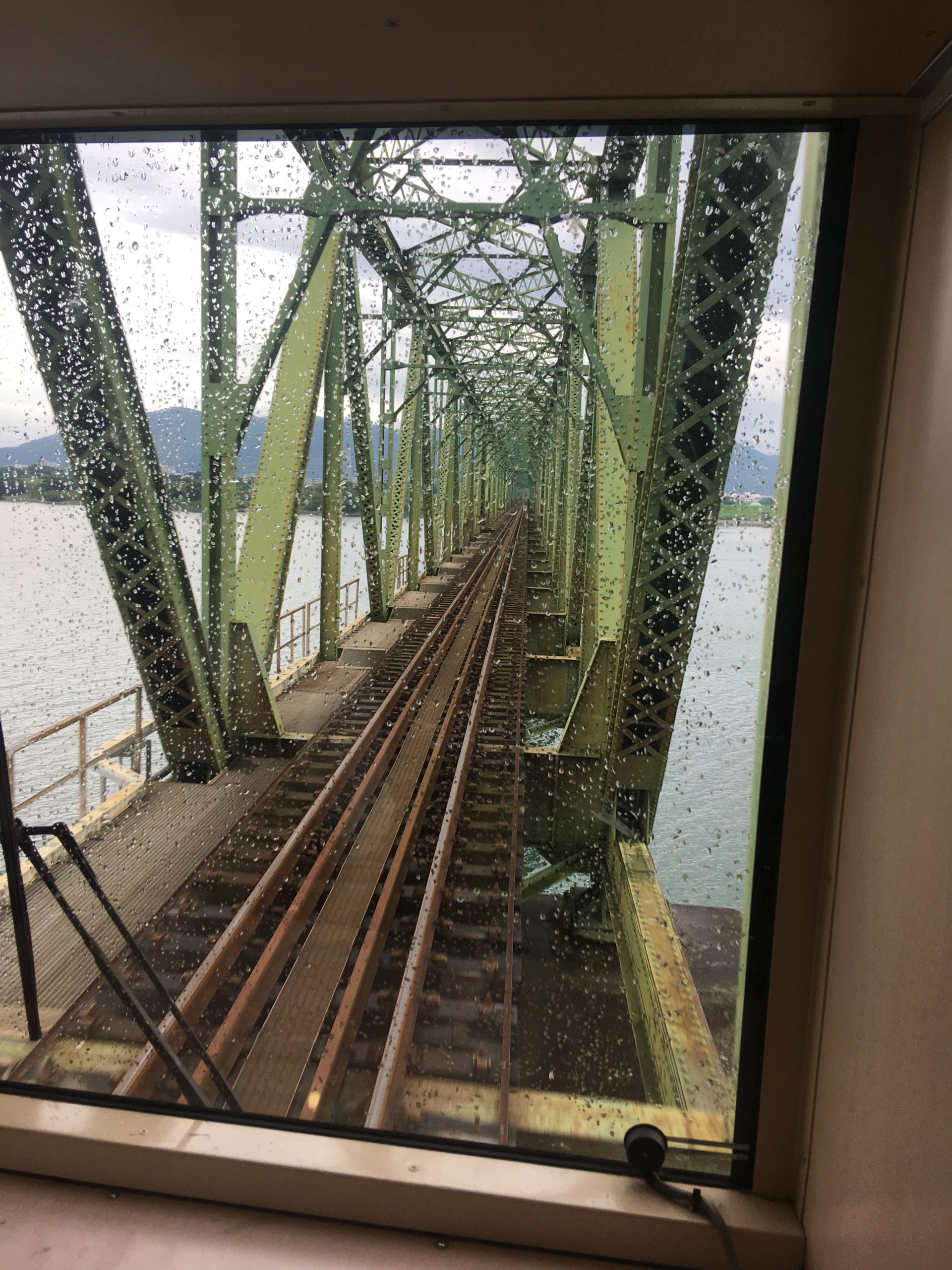
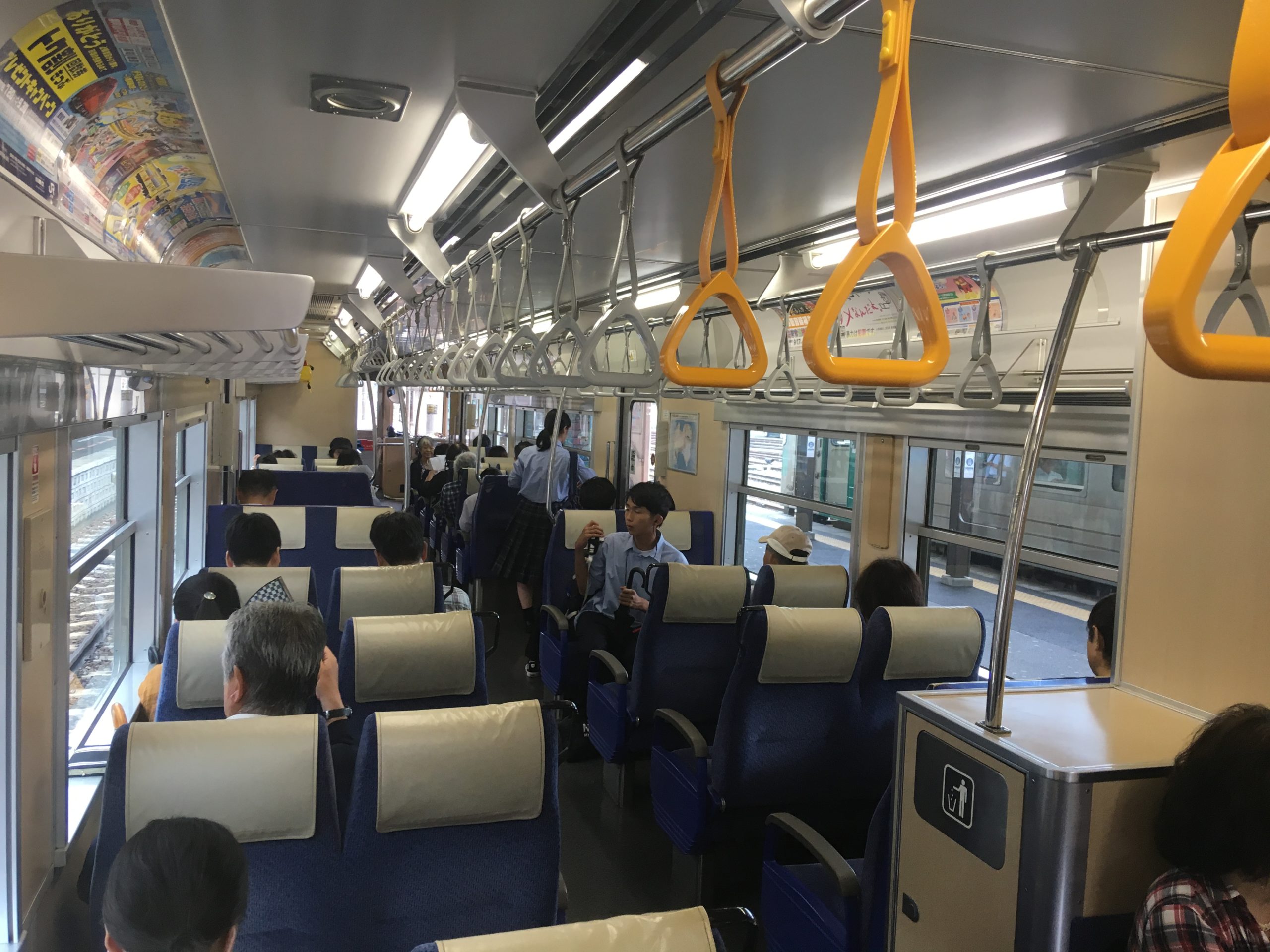
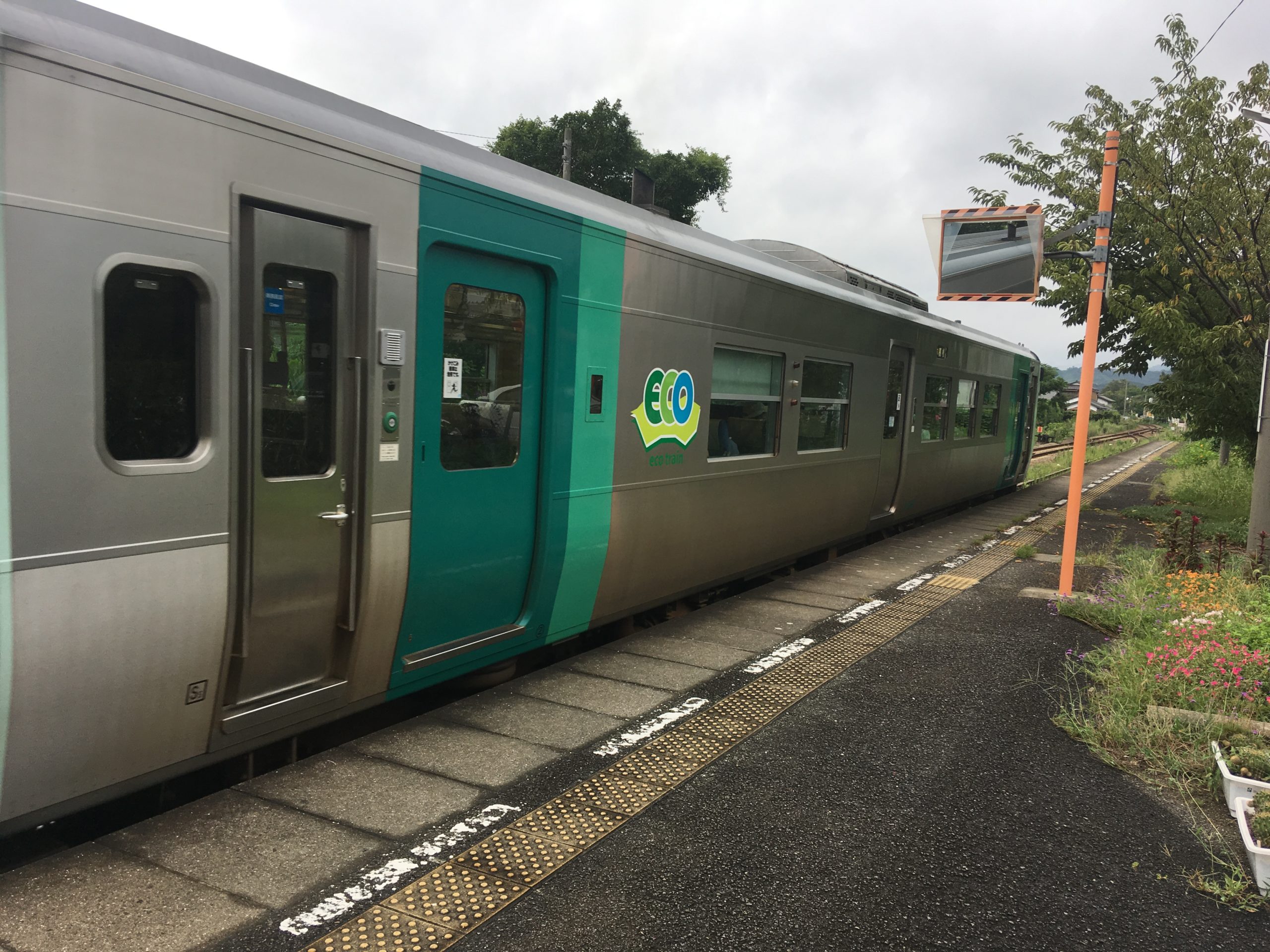
The ride to Bandoo Eki is quiet. Many people exit, and people seldom enter. We travel via a long bridge across the river. Then Bandoo Eki, a small train station, enters my view. I obediently exit the train from the front side and find a minimalistic platform. There is a small building at the end of the station. There I take my backpack out of the bag I use as rain cover, have a sandwich, and take in the scenery. What a relaxing scene it is, I take in the new sounds and smells. They will become normal during the hike, but for now they are exotic and new. I love the station, there are some beautiful fashioned seventies styled cushions on the benches in the station, and in front of the station I see a slew of taxis.
The pilgrimage begins
With my backpack strapped to my back I exit the station. These will be my first kilometers walking as a pilgrim! The route to temple 1 is marked with thick, green lines on the roadside. Around twelve in the afternoon Bandoo is a small, sleepy town, with some tiny store fronts hidden behind curtains strewn about. Barely anyone in the streets. The atmosphere is thick and pressing. The moisture from the rain still weighs down on me. But it is dry!
In the distance I can see a busy road, and behind there lies a temple. I reached my first break! Now I have to make me a pilgrim, instead of a tourist. Everything necessary for that transformation is available in the stores next to the temple. I take off my backpack and enter one of the stores. The owner and his wife exclaim “irashimase!” and rush towards me.
They diligently pick out an outfit for me. A white Henro-shirt with long sleeves (against the sun), a staff with a beautiful purple fabric wrapped around the top, my stamp book, and a bag for all temple necessities. I fill this bag with a parcel of paper ribbons, osamefudo, candles and incense. At home I had already packed a lighter. I am all set, except for a hat. Sadly, the traditional cone-shaped rice hat does not fit on my head because my backpack is in the way. As a replacement I buy a cotton cap which has sutras written on it. I have transformed from tourist to pilgrim. Now I still need to pay, but then my adventure can begin.
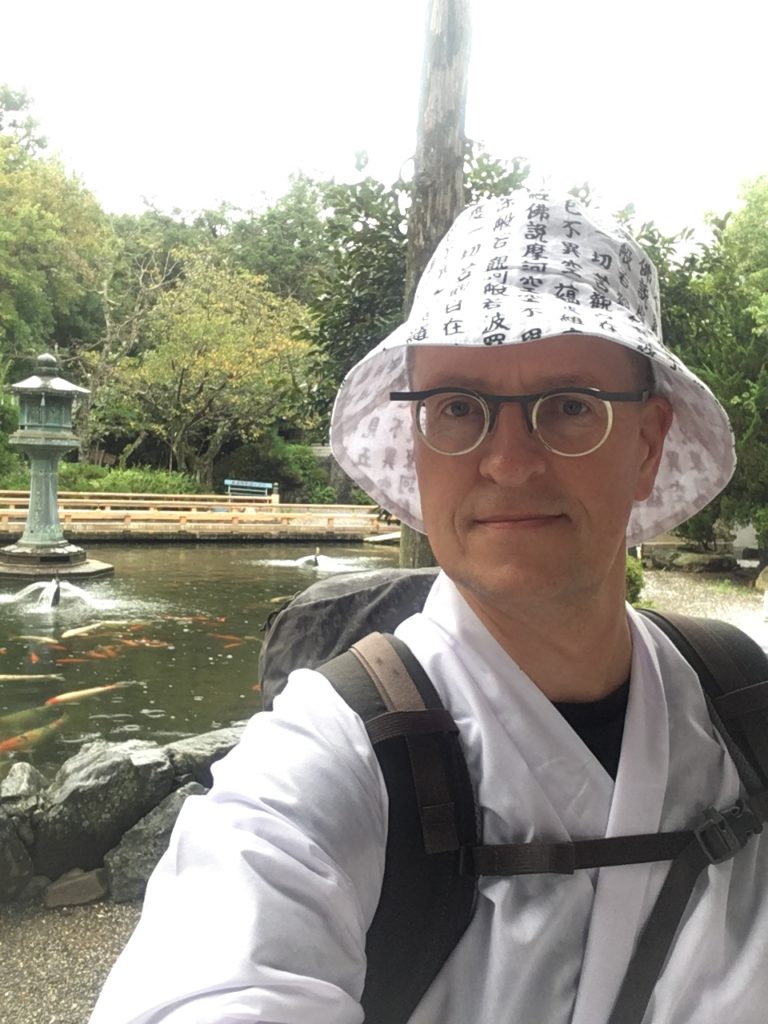
The owner quickly explains to me how to rest the temple-bag on the bands of my backpack. So now I have a bag on my belly, a pack on my back and my hands free to hold the staff.
Temple 1– Ryoozen-ji
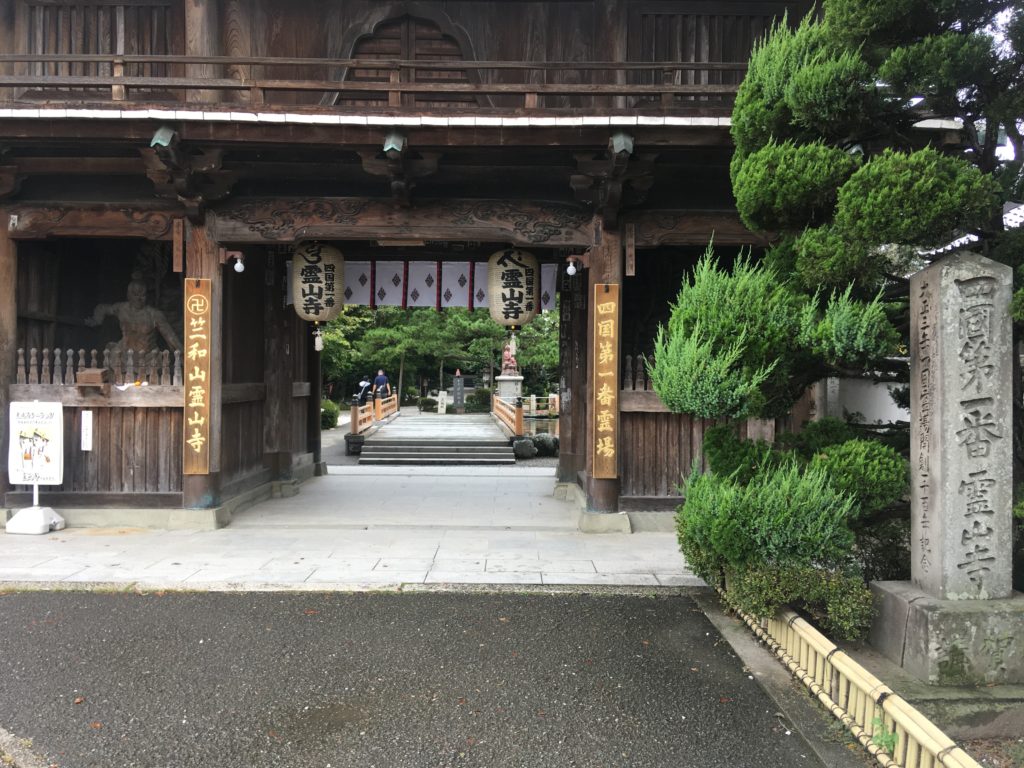
Dressed in this fashion I enter the temple through the front gate. And I immediately go back because you are supposed to greet the guardians of the temple before entering. Later in my journey I added a thanks for safe travels to that ritual of greeting. I enter while it begins to rain. This ensures that my visit to the temple is short. I look for the main altar and dictate the heart sutra from the route guide. I am mumbling and stumbling because it is a strange text which is hard to read and pronounce.
Inside of the temple I forget to look for the daishi-do, the second altar dedicated to Kobo Daishi. I however do go look for and find the stamp office, which is located outside of the temple at the side of the parking lot. The ladies there give me my first few stamps and calligraphy. Beautiful to see how they perform these tasks. I pay my first ¥ 300 for this service. One of them takes some time to write my name on my staff with a waterproof marker. Otherwise, I might lose my staff when I place it in one of the holders in a full temple. I thank her and leave the small office. With my backpack on my back again, I head for temple two. My pilgrimage has finally begun!
From temple 1 to temple 2 – 1.5km
It is not hard to find the route. There are many signs, stickers with arrows, and stone pillars. This road has been used for a long time and is easily traversable. The road leads me through the outskirts of Tukoshima, villages in their own right, grown together within the urban environment. In the distance you can see the elevated concrete motorway, and beyond the mountains. Now my main focus is to get used to the heat, high humidity, and the unknown surroundings.

Despite the clear markings, I get lost. I missed a sign for a diversion from the main road. I arrive at a crossroads and see the exit of temple 2, but no entrance. So, I walk back until I encounter a route marker. However, I missed the exit road again, because suddenly a woman runs out of her shop, shouts something at me in Japanese, and takes me by the hand to show me the correct route. My first ‘o-setai,’ a gift to the pilgrim, and I am so befuddled that I forget to thank her with an osamefudo, she is gone as quickly as she came.
I continue along this road and arrive at a busy provincial road. I cross it. Then a short climb, and I arrive at temple 2!
Temple 2 – Gokuraku-ji
Temple 2 lies remarkably close to number 1. It is a short walk there. The ritual here passes just as awkwardly here as just now at temple 1. I search for the main altar, and this time do visit the daishii-do. In about half an hour I have completed the entire ritual. Time to move on. Do I try to reach temple three now, or do I head for my sleeping arrangement at temple 1? It is half past three now and continuing at a brisk pace does not seem too attractive. I decide to head back.
Back to henro house nr 1
I walk back towards temple 1. Experienced pilgrims sometimes walk the route backwards. This part of the route is manageable backwards, as there are plenty of arrows. That is because pilgrims close the circle after having visited temple 88. Doing so they need to return via this route to temple 1. I also want to do this if I can find the time.
At home I had arranged my first sleeping quarters via internet reservation on the henro-site ahead of time. I sleep in Henro House 1. The Henro Houses are run by people that are intricately connected to the Shikoku88. They ask a small amount of money, offer a place to sleep, and help the henro where needed. Henro House ichi-ban (number one) is run by a strong, small lady, aged end-seventies.
She likes to follow through on everything. My shoes must be off, slippers on, and I must follow her upstairs. There I put down my backpack down in the tatami “bedroom.” She takes me back down to write down my details, and to make a copy of my passport. All hotel owners need to do this. Then she points me towards the o-furo, bathroom and indicates that I should wash myself. This ought to be done by sitting on a tiny seat and showering, covering yourself in soap, washing yourself thoroughly, and then rinsing the soap off. The hot bath that usually follows has not been filled; the weather is too hot!
We communicate by using a translation computer. It makes for some interesting confusions. Despite these, she teaches me a lot over a brief time span. I receive a leaflet with all the sutra’s, which is more helpful than the ones in the book, she says. And she neatly signs me in as a pilgrim and gives me a Henro House-card. I am number 1663.
A Hundred Year Henro Association, Preserving Henro. Preserving warm human connections.
as quoted on my membership card
My first diner .. served out of the microwave
I must take care of dinner myself. She points me towards a Konbini, where I buy my first meal. I can put it in the microwave at the house. We eat together and drink a glass of ice water. It is delightful to cool off like this. Tomorrow, breakfast at 6:30, which she offers as her o-setai.
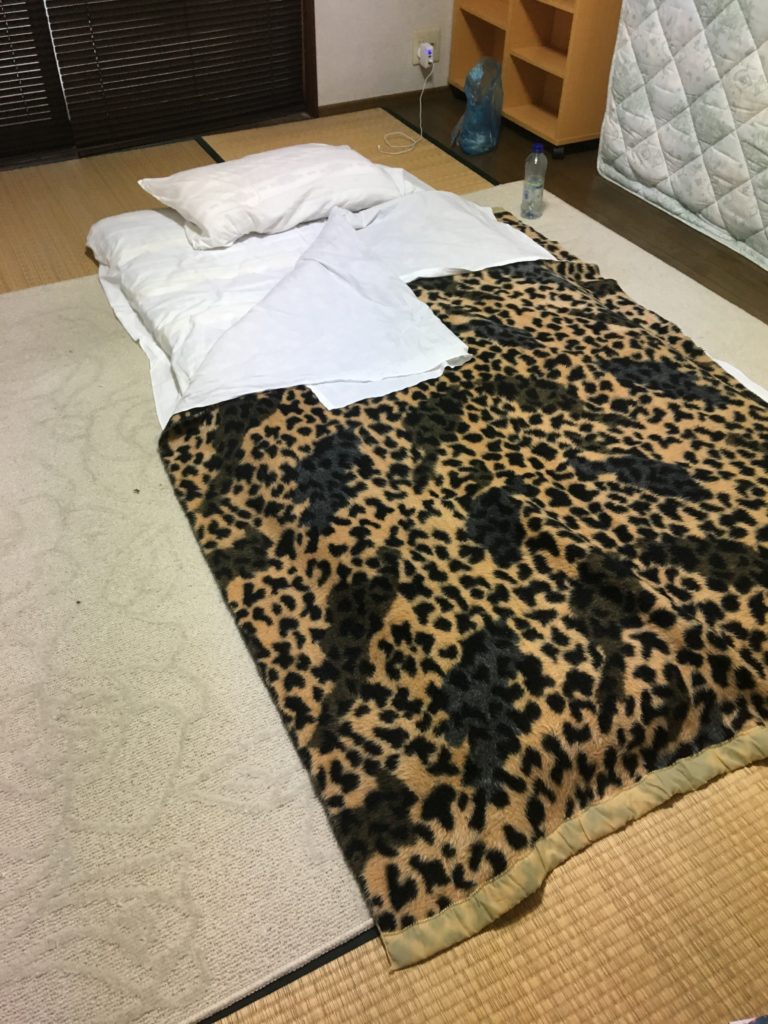
Total walking distance of today is 9,5 km (5.9 miles).
